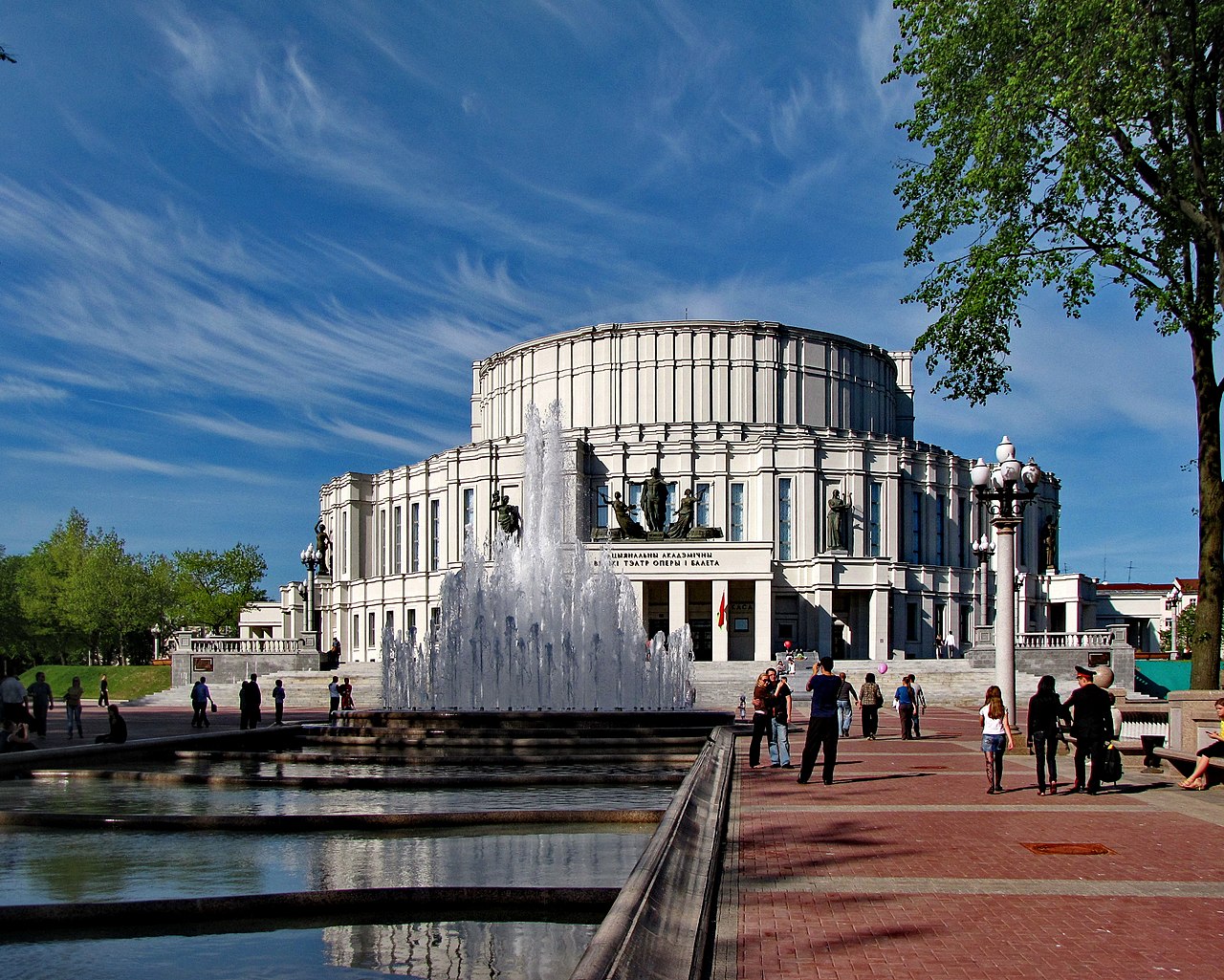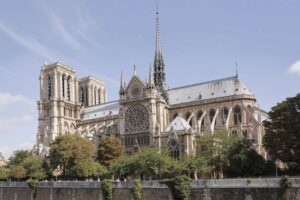Introduction
Neoclassical Futurist AI Aesthetics merges the monumental elegance of ancient Greek and Roman architecture with the innovative potential of artificial intelligence. This emerging visual language transforms columns, pediments, and mythic motifs through iridescent digital textures, fluid motion, and forward-thinking symbolism. More than a mere style, it represents a cultural conversation between human heritage and machine creativity.
Origins & Influences:
Neoclassical Foundations
Neoclassicism revisits the harmony and balance of classical architecture—emphasizing symmetry, proportion, and restraint. These foundational principles are revived in contemporary AI-driven reinterpretations.

Futurism Revisited
Early 20th-century Futurists such as Umberto Boccioni and Antonio Sant’Elia celebrated mechanization, speed, and modern forms—qualities that convincingly replay in Neoclassical Futurist visuals through AI-powered reimaginings.
The rise of generative AI art
Thanks to AI tools like GANs and diffusion models, machines now co-create, not just replicate. This allows for novel hybrids that blend past and future in unprecedented ways.
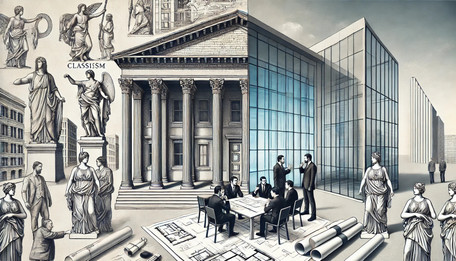
Prominent voices and case studies
Tim Fu’s Architectural Innovation
Tim Fu, formerly at Zaha Hadid Architects, coined “Neoclassical Futurism.” His work—such as The AI Stone Carver using Midjourney—combines ornate classical forms with AI-generated concepts that are then handcrafted by stone artisans.
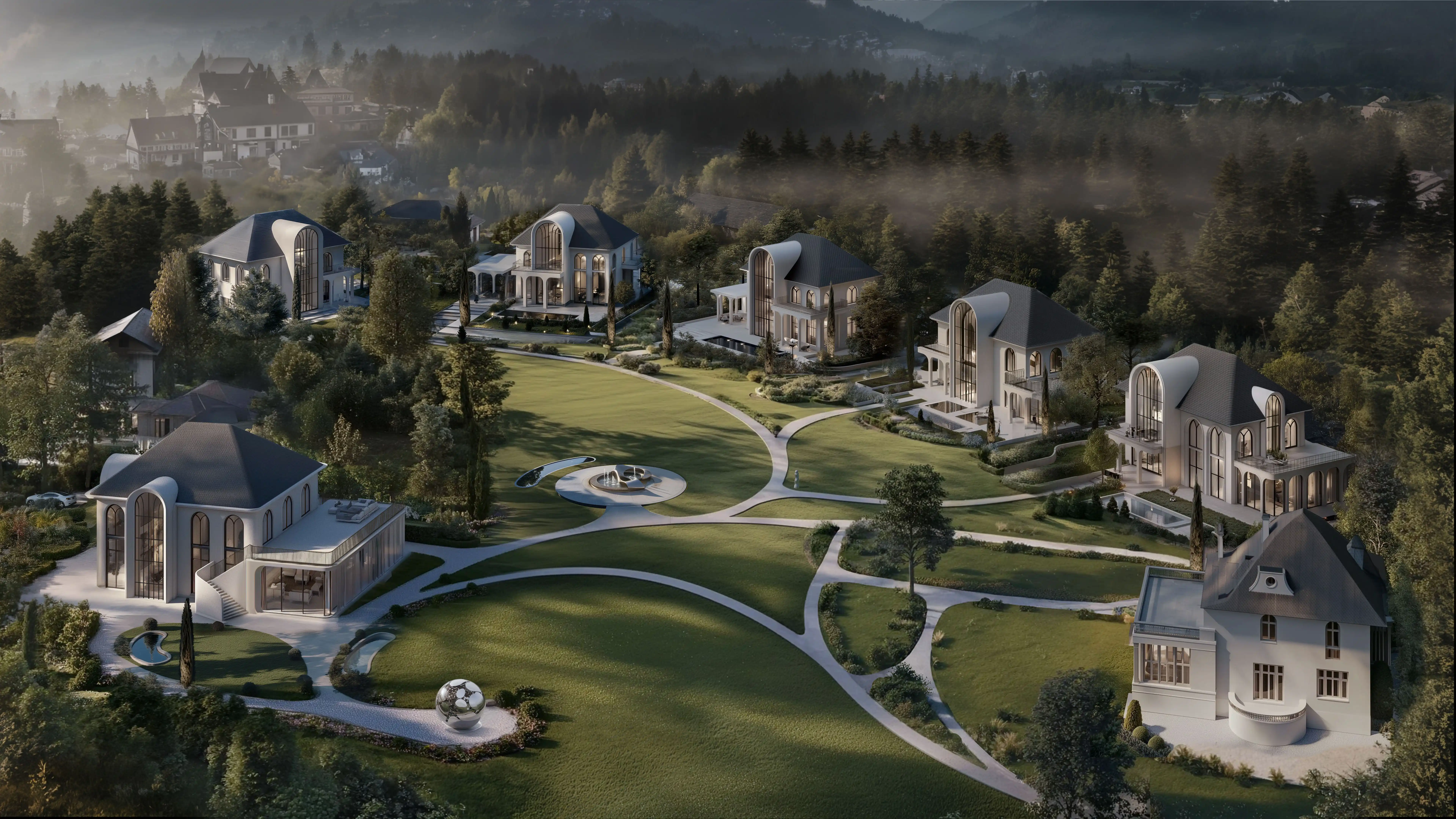
AI-Powered Neoclassical Art Platforms
Platforms like StarryAI host expansive galleries of neoclassical AI art, signifying a growing fascination with this niche aesthetic.
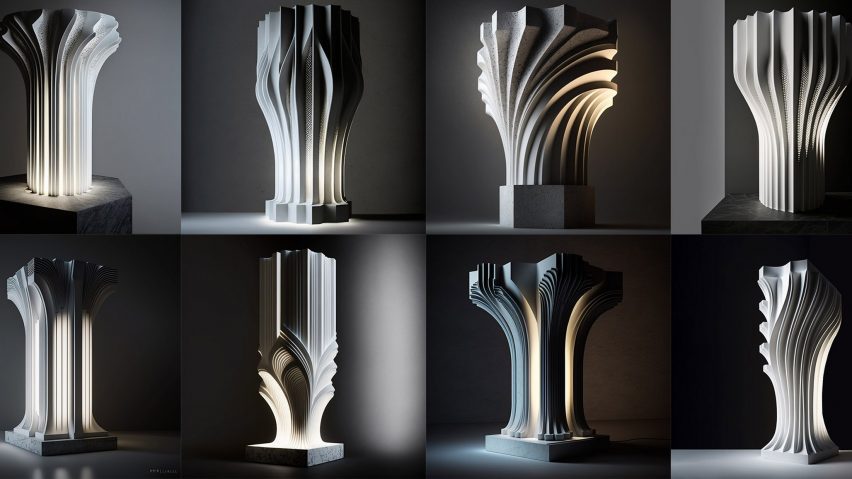
Ultra-Tiki Neoclassicism in ArtStation
Artists on ArtStation combine Tiki motifs, classical symmetry, and AI-based textures—highlighting the style’s versatility and appeal.
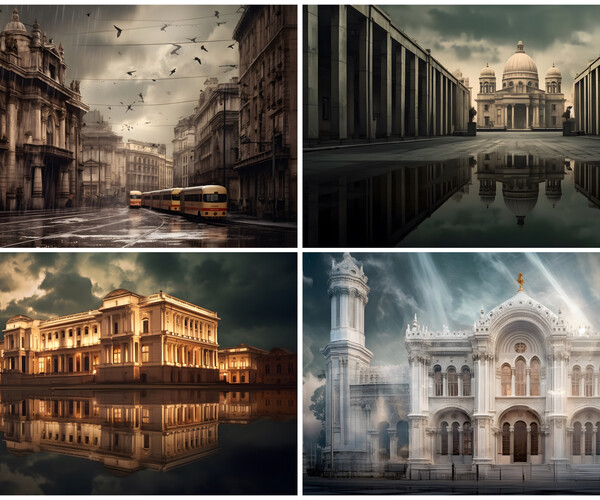
Defining characteristics
Architectural ornamentation
Expect refined columns, triangular pediments, and elaborate reliefs accented with metallic sheens, advanced finishes, and translucent elements.
Mythic Digital Motifs
Figures, deities, and abstract heraldry appear in sculptural form with ethereal or optical effects, bridging mythological symbolism and digital expression.
Kinetic and Layered Surfaces
AI introduces dynamic movement—marble that breathes, façades that ebb and flow—blending classical solidity with fluid futurism.
Advanced Materiality
Immersive simulations of marble, bronze, glass, and nano-composites fuse traditional materials with cybernetic innovation in virtual environments.
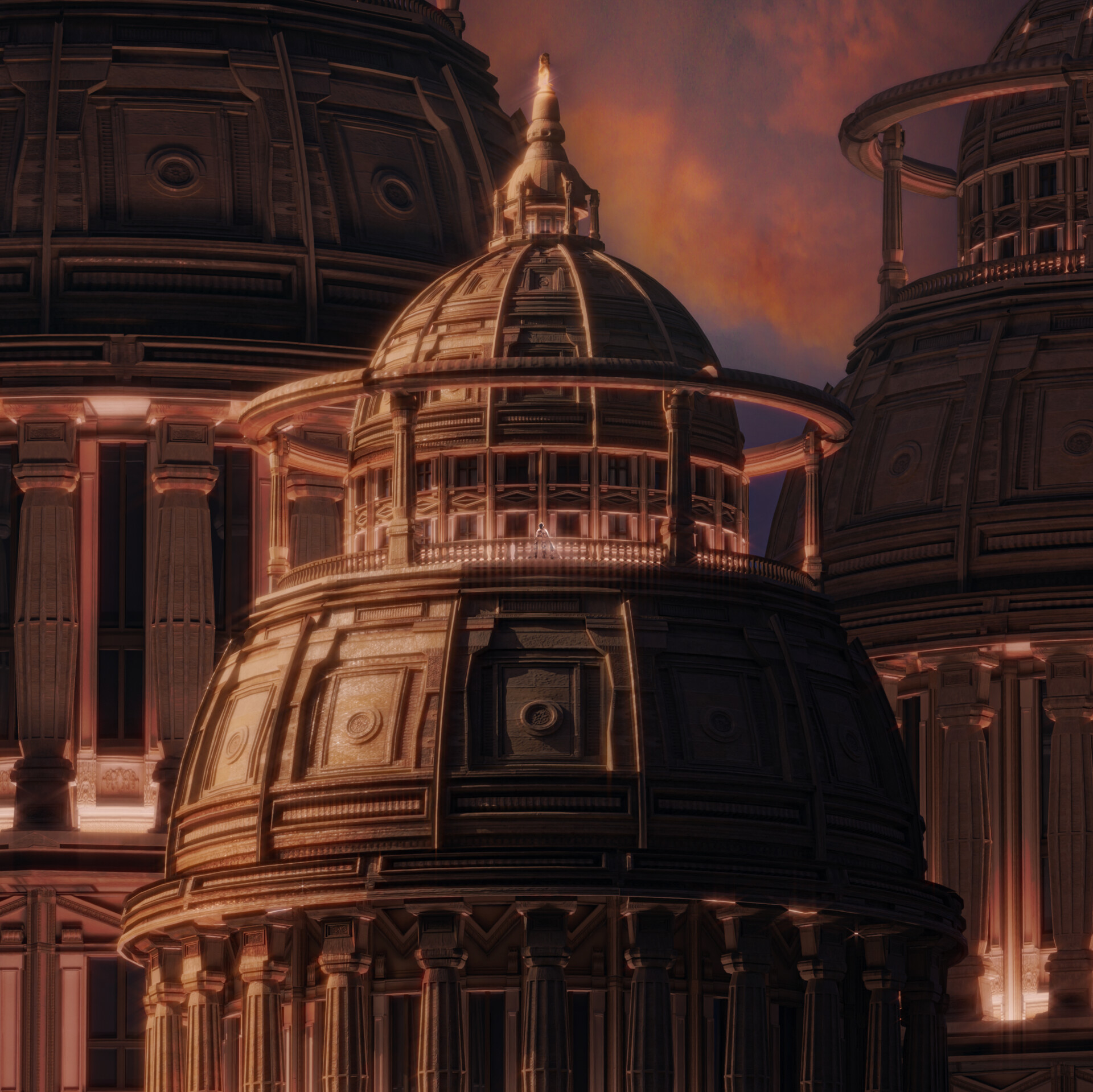
Cultural and ethical dimensions
Revival of Craftsmanship
As Tim Fu illustrates, AI generates creative designs while artisans preserve craftsmanship through manual realization—reversing the traditional human–machine relationship.
Democratizing Design
AI reduces barriers to ornate design, enabling creators worldwide to generate intricate aesthetics without substantial resources—raising both opportunity and questions about craftsmanship preservation.
Uniformity vs. Authenticity
Critics warn that AI aesthetics may reflect biases or algorithmic conformity. Yet Neoclassical Futurist maintains a distinct visual framework beyond generic outputs.

Applications and Future Directions
Architecture and Urban Planning
Concepts are emerging in AI-aided architectural renderings that fuse heritage monumentality with technological optimism.
Visual Art and Display
AI-driven sculptures, digital prints, and projection installations are reshaping exhibition spaces with grand gestures and kinetic forms.
Virtual worlds and Metaverse
In virtual reality and gaming, Neoclassical Futurist environments feature animated columns and shifting marbled skies—immersive, plausible realms.
Product and Fashion Design
Columnar structures in jewelry, digitally etched classical figures in decor, and neo-futuristic silhouettes in garments demonstrate the aesthetic’s crossover into consumer design.

Challenges and Considerations
Authorship:
Who truly authors the work—the human prompt engineer or the AI?
Craft Value:
Can AI homage enhance or diminish traditional craftsmanship?
Cultural Context:
Do hybrid forms respect classical iconography or risk diluting its cultural resonance?

Conclusion
Neoclassical Futurist AI Aesthetics represents a compelling fusion of timeless classical design and cutting-edge technological innovation. This emerging design movement seamlessly blends the elegance and structure of antiquity with the imaginative possibilities unlocked by artificial intelligence. Far from being a fleeting trend, it is a thoughtful convergence of the past, present, and future—a new visual language that redefines creative identity in the age of machines. Guided by visionary creators like Tim Fu, and powered by generative AI tools, Neoclassical Futurist AI Aesthetics is not just an artistic expression—it is a transformative evolution in architecture, design, and visual storytelling, reflecting a deeper harmony between heritage and hyper-modernity.
for more content like this click here!
REFERENFCE:


